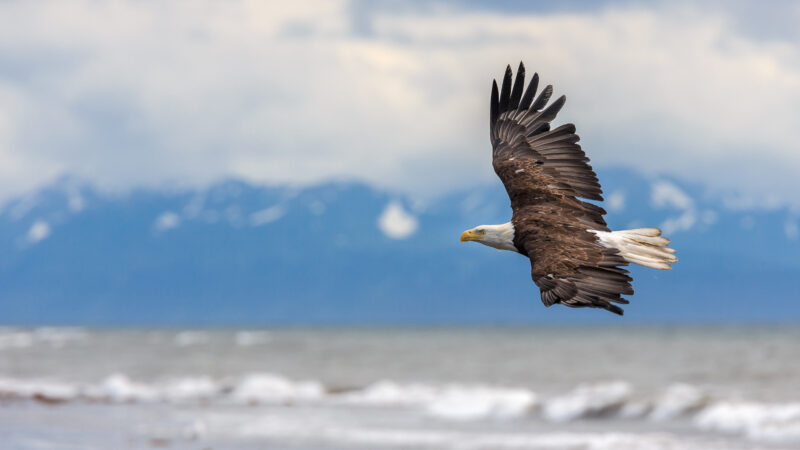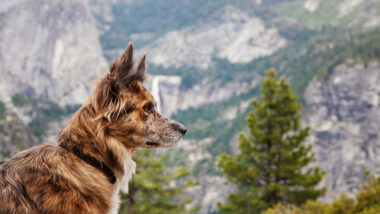Table of Contents Show
Situated along a small section of the Yukon River is the town of Eagle, Alaska. With a population of 83 at the last census, it’s easy to gloss over this community.
But we’ll share a few reasons why Eagle, Alaska, is worth the trek into the wilderness of the Last Frontier. Let’s dive in!
Where Is Eagle, Alaska?
Eagle, Alaska, sits on the banks of the Yukon River near the Alaska-Canada border. It’s less than three hours from the border crossing along the Top of the World Highway, but it’s much closer geographically — only 6 miles. The only road that leads into Canada from Eagle is Highway 5.
The road to Eagle is a popular detour as people travel the Top of the World Highway from Tetlin Junction, Alaska, to Dawson City, Yukon, in Canada. It’s about 95 miles from Chicken, Alaska, but the drive usually takes at least three hours because of the unpaved road.
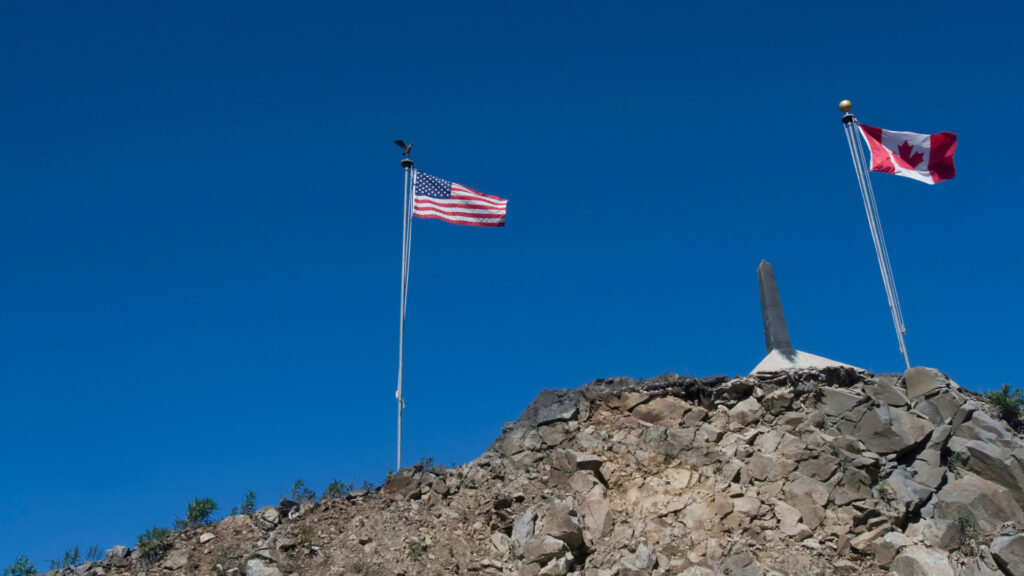
How Do You Get to Eagle, Alaska?
Highway 5, also known as the Taylor Highway, veers north just after Jack Wade, Alaska. Eagle sits at the end of this highway. It feels like you’re traveling out to the middle of nowhere.
The detour is about six hours round-trip. Once you arrive, the town covers only about one square mile and is home to less than 100 residents.
However, even with its small size and remote location, Eagle became the first incorporated city of the Alaska Interior in 1901, just a few years after the start of the Klondike Gold Rush. It was named for the eagles that nest on nearby Eagle Bluff.
What Is Eagle, Alaska, Known For?
Although Eagle, Alaska, was incorporated in 1901, it was established in 1897 during the Klondike Gold Rush. Miners settled there as they searched for gold in the Yukon Territory.
Because of the town’s location along the Yukon River, goods and people could move about freely and easily.
In 1899, the government established Fort Egbert to maintain order and protect the nearby international border. During these few years, Eagle developed as a center for commerce and transportation.
However, its prosperity was short-lived as miners moved to Fairbanks and Nome during their gold rushes. Fort Egbert was abandoned in 1911.
Today, visitors enjoy viewing the buildings from the Gold Rush era. The Eagle Historic District, a National Historic Landmark district, is home to these well-preserved glimpses into the past.
The combination of its gold rush history and the remote wilderness landscape is enough to draw travelers each year.
The 5 Best Things to Do in Eagle, Alaska
So, with only one square mile and less than a hundred people, there can’t be much to do in Eagle, Alaska, right?
It’s true that you won’t find the attractions and entertainment of Fairbanks, Anchorage, or Dawson City here. But this small town is still worth visiting. Let’s see why!
Book a Walking Tour of the Eagle Historic District
The Eagle Historic District is the main attraction. The Bureau of Land Management and Eagle Historical Society and Museums manage the six buildings.
In the summer, visitors can take a three-hour town walking tour that includes Wickersham’s Courthouse, Eagle City Hall, the Log Church, Fort Egbert, Redmen Hall, and the Customs Building Museum. This tour gives visitors an opportunity to see Eagle as it was in its heyday.
Explore Fort Egbert
With the rush of newcomers to the region in the late 1800s, the Army established Fort Egbert on the Yukon River as a way to control lawlessness and provide order.
Today, the fort is part of the walking tour of the Eagle Historic District. You’ll find several buildings preserved onsite.
The quartermaster storehouse is the oldest of the remaining buildings and contains exhibits to showcase the fort’s history. The mule barn and kennels display additional exhibits about life at the fort.
Keep in Mind: If you’re planning to drive the Top of the World Highway, check out these tips for a safe drive!
Float the Charley River in the Yukon-Charley Rivers National Preserve
If you want to enjoy Eagle, Alaska, from the water, float the Charley River. A permit isn’t required, but if you’re paddling alone, file a voluntary backcountry trip plan. Then, submit a notification of trip completion at the Eagle Visitor Center to let someone know where you are.
You might see peregrine falcons, sheep, caribou, moose, or bears along the way. For a wilderness adventure, the trip from Eagle to Circle via the Charley River takes 8 to 10 days.
Fish the Yukon River
Natives have fished the Yukon River for centuries. Salmon, including Chinook salmon, summer and fall chum salmon, and Coho salmon, comprise the bulk of fish harvested yearly.
You can also go sport fishing. You can purchase licenses in Eagle. If you’re an angler, you could spend days here.
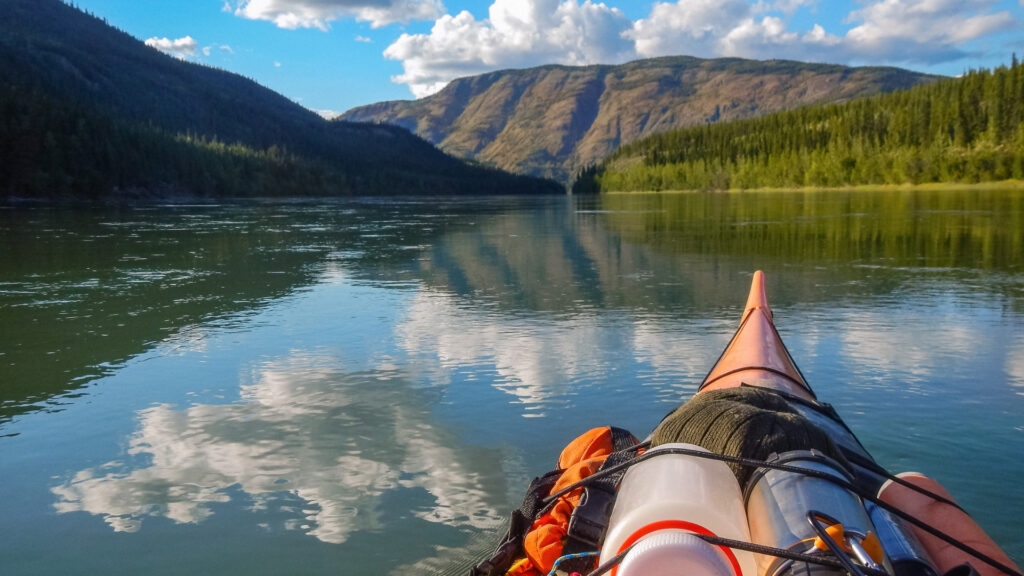
Book a Dog Sled Tour
Although we recommend visiting Eagle during the summer, if you visit during the winter, you should take a dog sled tour. Tours by Bush Alaska Expeditions include training in mushing and survival techniques, all of your camping and survival gear, food, transportation, and lodging.
These challenging tours aren’t for sightseers but rather for outdoor enthusiasts who want the true experience of a dog sledding adventure. These expeditions last 7 to 10 days.
Pro Tip: We love camping with our dog, but not all campgrounds are pet friendly. See How to Find the Best Dog Friendly Camping in the US!
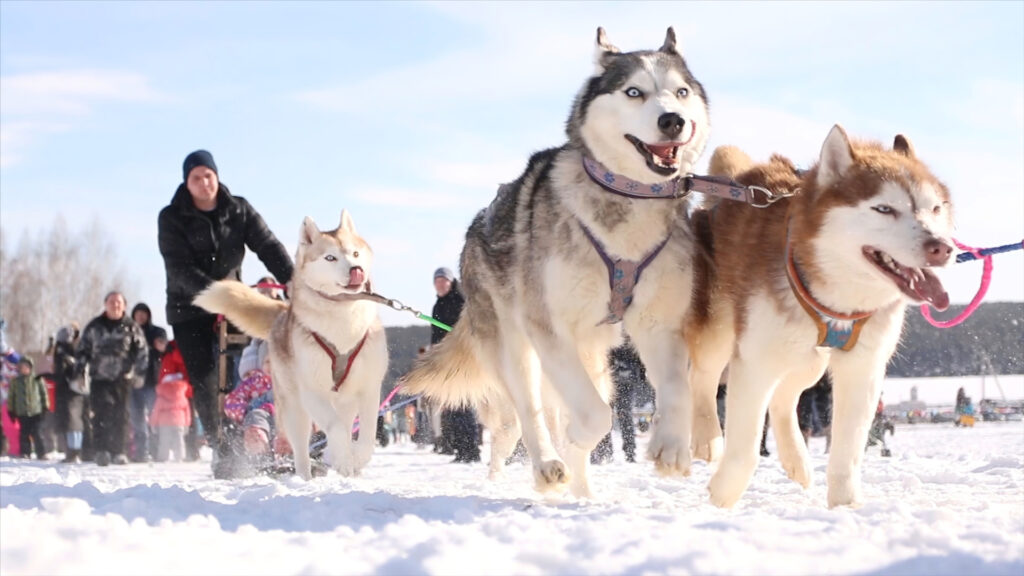
Are There Campgrounds in Eagle, Alaska?
For RVers, there’s only one camping option in Eagle, Alaska, and it’s on BLM land. The Eagle Campground is located at Milepost 160 on the Taylor Highway. It has 18 sites and several outhouses and costs $12 a night.
You can easily access Fort Egbert and the town of Eagle on foot from the campground. There’s an inn and riverside lodge in Eagle for travelers without an RV.
Take a Detour to Eagle, Alaska, the Next Time You Drive the Taylor Highway
As you drive from the junction of the Top of the World Highway north along the Taylor Highway, you may feel as though you’re being transported back in time.
The rugged wilderness is much the same as it was when the Athabascans first lived here. Even with the arrival of miners and soldiers, much of this region remains untouched.
The community of Eagle, Alaska, doesn’t have tourist attractions, fancy lodging, and amenities lining the highway. You’re entering a remote community. But the landscape is breathtaking, and the history is intriguing.
Consider taking a detour the next time you plan a road trip to the Last Frontier!
Is Eagle, Alaska, worth visiting?




